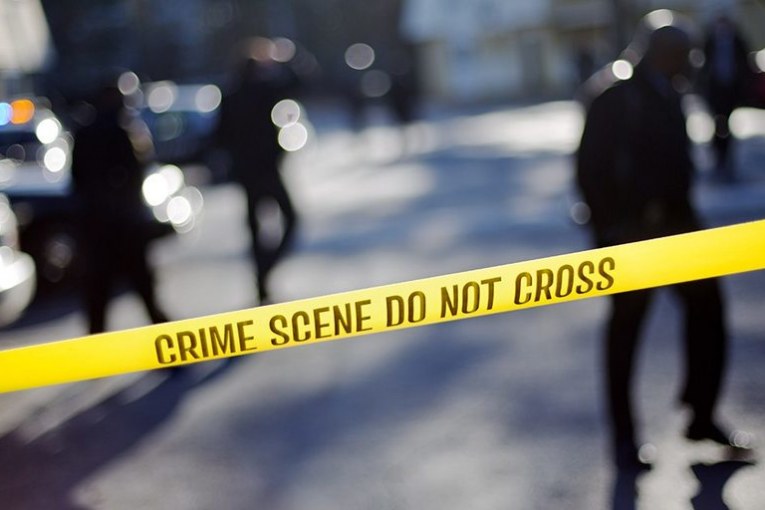

By David M. Greenwald
Recently a pro-law enforcement publication (Law Officer) put out a blurb arguing that 80 percent of the cities with the largest murder rate increase were led by Democratic mayors. Meanwhile, cities with Republican leaders “had comparatively smaller increases in homicides.”
But their analysis paints a fairly misleading picture.
First of all, of the 10 cities with highest increase in murder rates from 2019 to 2020—Milwaukee, Portland, Louisville, Mesa, Minneapolis, Columbus, Fresno, Forth Worth, Omaha, Atlanta and Seattle—four of them—Omaha, Fort Worth, Mesa, and Fresno—had Republican mayors.
Second, of the top 50 largest cities in the US, Republicans are only mayors in 20 percent of them overall. So the distribution of 80 percent is actually what you would expect.
Moreover, there is another way to look at it. Republicans lead 20 percent of the 50 largest cities, but account for 40 percent of the ten cities with the worst homicide spikes.
This is the problem with attempting to politicize this kind of thing. What we have seen over the last year is that homicides went up. They went up in both blue and red states and in cities headed by Republican and Democratic mayors.
But in a culture steeped in politics, any change in the crime rate is bound to drive multiple political narratives—we have seen that in areas like San Francisco and Los Angeles, where there has been pushback and potential recall movements against progressive DAs.
We saw this in the New York City mayor’s race where Eric Adams won a narrow victory in the primary.
The media narrative is that he was Black but, as a former police officer, he “rejected calls to defund the Police Department and pledged to expand its reach in the city.”
Lisa Lerer of the NY Times writes: “His appeal adds evidence to an emerging trend in Democratic politics: a disconnect between progressive activists and the rank-and-file.”
The NY and national media used this is a cudgel to hammer progressives (for those who want to argue that the media is liberal, this emphasizes that they are less liberal and more establishment and may lean center left, but are by no means progressive).
The narrative misses a key point—who won the Manhattan DA’s race.
Alvin Bragg will become the first Black DA in Manhattan’s long history and the civil rights attorney ran on a progressive platform.
This despite the fact that the four staunch progressives split their vote. Add up their vote and they have about 51 percent of the overall vote, and the strongest mainstream candidate Tali Farhadian Weinstein finished with just 30 percent, despite spending twice as much as the four progressives combined.
Earlier this year Larry Krasner, opposed by a police-backed candidate, easily won the Democratic Primary and is widely expected to win in the general in the heavily Democratic Philadelphia.
As one media publication put it: “That primary was seen as a major test for the progressive reforms Krasner and others like him are pushing — amid a big spike in violent crime happening in major U.S. cities since the start of the pandemic. Philadelphia has reported nearly 300 homicides so far this year.”
The Vanguard has been attempting to counter the misleading narrative. Murders are definitely up from where they were pre-pandemic. Contrary to some polling, however, they are still near 40-year lows and well below the peak.
Polling last week showed 57 percent of the public erroneously believed that violent crime was at a 30-year high, when the opposite is nearly true.
We have argued that this is largely media-driven. Indeed, the NY Times ran a story last month, quizzing their readers and finding that people “misperceive crime trends.”
For example 53 percent of the NY Times readers thought Chicago ranked No.1 in murders, a full 84 percent believed it was in the top three in the nation—in fact it is seventh in murder rate in 2020. (This was based on a not small but definitely not random sample of nearly 59,000 people.)
Writes the Times: “Chicago has struggled mightily to contain violence, but its reputation has probably also been shaped by portrayals in film and TV; news coverage; and political messaging.”
They add, “Former President Donald J. Trump repeatedly criticized Chicago, saying it was “worse than Afghanistan.” And conservatives have long depicted Chicago as a crime capital.”
The Times found about New York, which also tends to be viewed as violent: “It endured 2,245 murders in 1990, but by 2017, the number had fallen below 300.”
The Times noted: “Readers fared a little better in assessing the trend in New York. Still, 44 percent did not know that its murder rate has been below the national average in recent years, including last year.”
The Times found that less than half the readers recognized that the murder rate in 2020 was lower (much lower in fact) than it was in 1990. Thirty-two percent said about the same while 28 percent said higher. That means that 60 percent thought the murder rate was the same or higher in 2020—not even close.
In 1990 it was just under 10 per 100,000. Last year it was about 6.2 per 100,000. The murder rate peaked at 10.2 percent in 1990, reached a secondary high of 9.8 in 1990, and was as low at 4.4 percent in 2014. It has since bounced up slightly. But even now it’s lower than any year between 1967 and 1998. In 2019 it was at five percent.
A Pew Research report in 2016 found that “voters are usually more likely to say crime is up than down, regardless of what official statistics show.”
But it’s also important to understand that while there was a steep rise in murder—about 25 percent, the largest increase in US history—overall, crime actually went down.
The readers got this wrong as well, with 51 percent believing it went up and 72 percent believing it either went up or stayed the same.
Writes the Times: “It’s not altogether surprising that overall crime would drop in 2020; it has fallen in 26 of the last 28 years, including each of the last 17 years.”
Finally, the Times found that falling police budgets probably did not account for the increase in murders despite this fact: “The National Fraternal Order of Police, the former N.Y.P.D. commissioner Bill Bratton and Gov. Greg Abbott of Texas have been among those making that connection.”
The Times analysis found that this is probably not the case. For one thing, most cities increased their police budgets last year. Only 37 of 105 big cities decreased their budget and places that reduced their budget “were about as likely to see a rise in murder as places that increased it.
“Murder was up in 31 of the 37 cities that lowered their police budgets (84 percent), while it was up in 54 of the 68 cities (79 percent) of cities that raised their police budgets,” they found.
That tracks with my overall point—politics is probably not driving crime rates.
But media coverage seems to definitely be driving the perception of them in the public view—and despite some notable efforts by the Times and the Chronicle, it is driving a false narrative.
—David M .Greenwald reporting







Tweety Bird:
I tink I read this story like tree times this week.
I did, I did.